Agastache foeniculum (aka Anise Hyssop)
Exploring the many gifts offered by the Anise Hyssop in the context of Food Forest Design. This is Installment #4 of the Stacking Functions in the Garden, Food Forest and Medicine Cabinet series.
This post serves as the third crossover post which is both part of the above mentioned (Stacking Functions in the Garden, Food Forest and Medicine Cabinet : The Regenerative Way From Seed To Apothecary series) as well as constituting the 6th installment of the Befriending The Boreal series.
Anise hyssop, Agastache foeniculum
Family: Lamiaceae
Part used for medicine/food: leaves, flowers, root and seeds
Constituents:
Antioxidants, acacetin, apigenin, methyleugenol, pulegone, menthone, Estragole, isomenthone and spathulenol, 3-O-caffeoylquinic acid, calycosin, caffeic acid, 6,7-Dimethoxyquercetin 3-O-glucopyranoside, Agastaquinone (diterpenoid quinone), genistein, kaempferol 3-O-glucoside, 4′,5-Dihydroxy-3,3′,7-trimethoxyflavone, rosmarinic acid, tilianin, ursolic acid and β-sitosterol in significant amounts.
Medicinal actions:
antibacterial, antiviral, anti-mutagenic, anti-inflammatory, analgesic, cardiac, carminative, diaphoretic, antihemorrhagic, pulmonary aid, pectoral, poultice and expectorant, radioprotective, cytotoxic activity to cancer cell lines, anti-nociceptive, anti-atherogenic, as well as soothing & coughs suppressing
Respiratory Ally for Colds & Flus
Antimicrobial and Anti-inflammatory Properties
Digestive Support
The leaves are cardiac and diaphoretic[8][9][3]. An infusion of the leaves is used in the treatment of colds, fevers, weak heart etc[8]. When left to go cold, the infusion is used to treat pains in the chest (such as when the lungs are sore from too much coughing)[10]. A poultice of leaves and stems can be used to treat burns[3].
Use the leaves in a tea to stimulate the digestive system; it is a warming digestive aid, it is carminative (relieves flatulence) and eases diarrhoea. It is anti-bacterial and anti-inflammatory, making it useful for relieving congestion, coughs and colds.
Pharmacology:
Agastaquinone (diterpenoid quinone), its oxime derivative offers cytotoxicity against human cancer cell lines
Rosmarinic acid, rosmarinic and caffeic acids methyl esters offer anti-oxidant, anti-aging and immunological benefits. Antiviral against human immunodeficiency virus (anti HIV-1 integrase)
4′,5-Dihydroxy-3,3′,7-trimethoxyflavone Antiviral against poliovirus
Estragole offers antifungal benefits and Antifungal against Candida.
Essential oils, limonene, anise aldehyde offers Anticancerogenic, antimutagenic, cytotoxic benfits as well as Antidepressant and anxiogenic effects
Tilianin offers anti-oxidant/Anti-atherogenic properties as well as Antihypertensive (vasorelaxant) properties
Anti-oxidants offer Vasoactive, antioxidant
Ursolic acid offers Spasmolytic benefits (stops convulsions/spasms)
Cold Hardiness: 3 - 9
Native Range:
GROWTH FORM:
Erect, upright, clump-forming herbaceous, perennial plant
REPRODUCTION:
Flower reproductive parts. the flower has both pollen- and seed-producing parts; the flower has either only pollen- or only seed-producing parts.
Seed:
Fertile flowers produce an oval shaped, dry nutlet containing one oblong brown seed about 1 mm long and 2 mm wide. These disperse by wind shaking the stem. Seeds are small and need light for germination plus 30 days of cold stratification. Seeds that fall from the plant will readily self-germinate in the spring and the seedlings transplant easily and larger ones will flower the same year. American Goldfinches are quite fond of the seeds, even in the green stage.
Habitat and Ecological Niche:
Agastache foeniculum is native to most of the southern Canadian provinces and the Northwest Territory. The species occurs in Connecticut, New York, New Hampshire, New Jersey, Pennsylvania, Kentucky and from Michigan to Montana south to Illinois, Colorado and Wyoming.
The species is tolerant of deer and drought, and attracts various potential pollinators, including hummingbirds, butterflies,[3] bumblebees, honey bees, carpenter bees, and night flying moths.[9] Bees make a light fragrant honey from the flower's nectar.[10]
Anise hyssop is considered one of the premier plants for feeding pollinators. The 1969 edition of the Rodale's Encyclopedia of Organic Gardening claims that one acre planted in anise hyssop can support 100 honeybee hives, the flowers blooming for a very long season, often from June until frost and during the time it blooms, one can see bees on the flowers from the morning until dusk.[11] A horticultural writer has claimed that the many flowers of the plant provide forage for bees, butterflies and hummingbirds.[12]
I love this plant for it’s ability to appear to be ornamental in a front yard garden (appeasing turf totalitarians) yet it provides nutrient dense food and medicine as well.
Names in Other Languages
Arabic: Aghastash shamri (أغستاش شمري)
Chinese : Huo Xiang, Huí huò xiāng (茴藿香)
Danish : Anis Isop, Indianermynte
Dutch : Anijsplant, Dropnetel, Anijsnetel, Dropplant
English: Anise-hyssop, Anise-mint, Blue giant hyssop, Licorice-mint, Fennel, Fennel giant hyssop, Fragrant giant hyssop, Giant hyssop, Lavender giant hyssop
Estonian : Aniisi-Hiidiisop
Finnish : Intianminttu, Minttuanis, Yrtti-Iiso, anisiiso,
French : Agastache Fenouil, Anis Hysope, Hysope Anysée, Duft Nessel
German : Anis-Ysop, Duftnessel
Hungarian: Ánizsillatú izsópfű
Lithuanian: Pankolinė kinmėtė
Norwegian : Anisisop
Ojibwa: Wexa ‘wûnûckwûk’
Persian: زوفای بزرگ معطر
Portuguese: Hissopo-anisado, hissopo-gigante
Russian: Mnogokolosnik fenkhel’nyy (Многоколосник фенхельный)
Swedish : Anis-Isop, Indianmynta
Ukrainian: Lofant (Лофант)
Anise Hyssop scientifically known as Agastache foeniculum is neither anise (Pimpinella anisum) nor hyssop (Hyssopus officinalis), despite its common name. However, it belongs to the Lamiaceae / Labiatae (Mint family), just like hyssop. The plant is native to Southern Canada (Alberta, Ontario) to the north central and northern states of the United States (Wisconsin, Minnesota, Illinois, Iowa, Dakota, Colorado). Few of the popular common names of the plant are Anise Hyssop, Anise-Hyssop, Anise-Mint, Blue Giant-Hyssop, Fennel Giant Hyssop, Fragrant Giant Hyssop, Giant Hyssop, Lavender Giant Hyssop, Lavender Hyssop, Licorice-Mint and Wonder Honey Plant.
Anise Hyssop is an herbaceous perennial growing about 1m tall with mild branching. It has spade-like, mildly serrated leaves that are soft to the touch, and tall clusters of small purple flowers that bloom from July to September. When crushed slightly, the leaves and flowers smell strongly of sweet licorice. This is a great perennial plant when considering developing a pollinator garden or just to attract more pollinators to your garden!

Anise hyssop has long been used in traditional herbal medicine, especially amongst Native Americans. Infused in tea, anise hyssop can be used to relieve congestion, acting as an expectorant (clearing mucus from lungs and airways). A cold-infusion can be used to relieve chest pains caused by excessive coughing, and mixed with licorice, it can be used to treat respiratory infections and bronchitis. A hot infusion induces sweating, and can therefore be used to help with fevers; as a result of this quality, the Cheyenne were also said to use anise hyssop in sweat lodges.
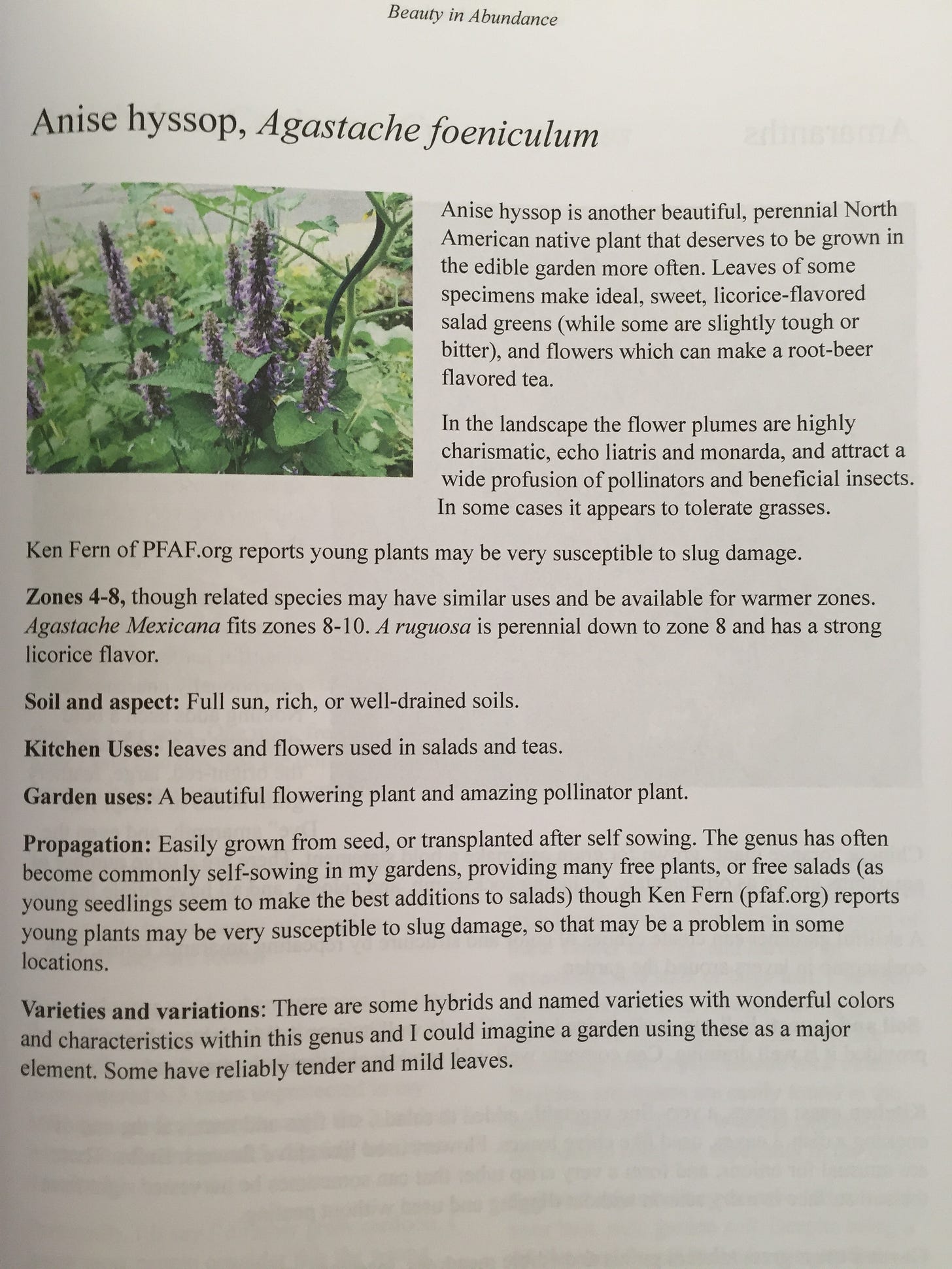
Anise hyssop In The Boreal Forest:

Clinical research has shown anise hyssop essential oil to be antiviral towards Herpes simplex I and II. Used as a poultice, anise hyssop is said to help treat burns, and, made into a salve, can be used to treat wounds. The Iroquois were said to make a wash from it used to relieve the itching associated with poison ivy. Anise hyssop is also purported to have mood-lifting qualities, and it was burned in incense as a sort of anti-depressant by some Native American groups.
Medicinal Uses of Agastache foeniculum (Anise Hyssop)
Anise hyssop is a perennial herb that is well known for its many useful herbal benefits, among that being its medical uses in the herbalist community.
Used as an infusion in tea and cold remedies. Will relieve congestion.
As a cardiac herb, it is also used to strengthen a weak heart.
Clinical research has shown that the essential oils of Anise Hyssop is antiviral toward Herpes simplex I and II.
A poultice of Agastache foeniculum is also useful in treating burns.
Being diaphoretic, a hot infusion will induce perspiration and is therefore useful in treating fevers.
Indians used the leaves in incense to treat depression as it provided an uplifting fragrance.
A cold infusion of Agastache foeniculum leaves is used to relieve pains in the chest from excessive coughing.
Radioprotective due to it’s antioxidant constituents.
Has antibacterial and anti-inflamatory properties. Used as a preventative for summer colds.
Used by Indigenous peoples of Turtle Island as an antiseptic in wounds. Can use as a salve.
Traditionally used to treat burns with a poultice of leaves.
Pectoral (Used to treat lung issues) - Often combined with licorice for lung conditions such as repiratory infections and bronchitis. It is an expectorant and cough suppressant.
It's a aromatic digestant, therefore preventing gas, bloating. Simply sip some tea with you meals to prevent gas and bloating.
Treats diarrhea.
When its leaves are crushed, they have a beautifully aromatic smell of licorice.
Take a bath in the leaves for treating sunburn or for fungal conditions such as athletes foot or yeast overgrowth.
Being aromatic, the oils in the plant are useful in opening up the airways.
Sedative - One of the main oils in Agastache foeniculum is Methyleugenol, which has been shown to have sedative properties.
Hot infusion induces sweating, and can therefore be used to help with fevers.
The Cheyenne use anise hyssop in sweat lodges.
The Iroquois were said to make a wash from it used to relieve the itching associated with poison ivy.
Plant is excellent in baths and foot-baths for simply cooling off or for treating sunburn and fungal conditions such as athlete’s foot and yeast overgrowth.
Indigenous tribes used a poultice of the leaves to treat burns and rashes.
An infusion of Anise Hyssop and Elk Mint is a traditional remedy for colds and chest pain used by the Chippewa tribe.
The Cheyenne used anise hyssop tea to relieve depression.
The Cree people of Saskatchewan also steeped Anise hyssop leaves in hot water to make a comforting tea to reduce congestion.
Culinary Uses
In Northern America, anise hyssop is cultivated as honey plant by beekeepers and in house gardens for tea and as culinary seasoning, in the same way used already earlier by the Indian tribes.
It has also been experimentally grown as essential oil plant in the former Soviet Union and in Southern Finland, here also in house gardens as tea and spice plant for cakes and sweets.
Leaves, seeds and flowers have a sweet anise flavor and are eaten raw or cooked.
They are used as a flavoring in raw or cooked dishes and present a delicious addition to the salad bowl.
Seeds are used in cookies, cakes and muffins.
A pleasant tasting tea is made from the leaves.
Leaves and flowers can be consumed raw or cooked.
They are used as a flavoring in raw or cooked dishes.
They have a sweet aniseed flavor and are one of our favorite flavorings in salads.
They make a delicious addition to the salad bowl and can also be used to flavor cooked foods, especially acid fruits.
The foliage has an anise fragrant and is used as flavoring in salads and teas.
The soft, anise-scented leaves are used as a seasoning, as a tea, in potpourri, and can be crumbled in salad.
The dried leaves can be used in potpourri.
Leaves can also be used as a substitute for French tarragon or mint, or they can be mixed into pasta, tossed into green salads, floated on soups, or stirred into fruit bowls for added flavor.
Methods of Medicinal Use
Like all plants, it has infinite possibilities for use and application! Here are some of the more common methods we use in modern day, western herbalism.
Anise Hyssop Tea
Tea is the preferred method for alleviating fever and encouraging relaxation and sleep. Used in combination with demulcent Licorice root, Anise Hyssop tea is especially effective for lung conditions such as bronchitis and respiratory tract infections. Adding a small amount of honey may lend additional help soothing dry coughs.
To make Anise Hyssop tea:
Pour about 12 ounces of just boiled water over about 1 tbsp dried or 2 tbsp fresh Anise Hyssop leaf and flower, cover, and let steep for 10-15 minutes.
Strain, and savor the spicy, sweet scent and flavor of Anise Hyssop in your cup! It also makes a wonderful after-dinner digestive.
Tincture
A tincture of Anise Hyssop is a wonderful, portable option to have on hand for issues like cold or flu, congestion, fever, sore throat, gassy digestion, and bloating. A few drops will also calm the nerves and lift the spirit. For physical ailments, I recommend 10-20 drops at a time, 2-3 times per day or until symptoms are relieved. For emotional, energetic use, start with just 1-3 drops, 2-3 times per day. When taking tinctures, I recommend allowing yourself even just 1 or 2 minutes to sit quietly and experience the herb. Make it a little personal ritual.
Tinctures are usually an alcohol (80 proof vodka, grain alcohol, or other clear booze) extraction of a plant, however, vegetable glycerine or apple cider vinegar can be used in place of alcohol. To prepare an Anise Hyssop tincture:
Pour menstruum of choice over fresh (1:2 herb to liquid ratio) or dried leaves and flower (1:5 herb to liquid ratio).
Keep in a sealed, preferably glass, container for at least 6 weeks, shaking every day.
Strain, label, and bottle.
Anise Hyssop Oil or Balm
It makes a lovely skin oil or balm, as it’s useful for irritated, inflamed, and infected skin. To make a simple oil, pour oil of choice (I like using olive, jojoba, hempseed, or apricot kernel oil) over dried leaf and flower in a preferably glass jar, so that the herb is completely submerged. Seal the jar tightly and shake well daily for 2-3 weeks, keeping the jar on a sunny, warm windowsill, then strain the herbs out using cheesecloth.
To make a simple balm:
Melt a tablespoon of shaved beeswax for every 4 ounces of strained Anise Hyssop oil on low heat on the stovetop, using a double boiler.
Once the beeswax is melted, pour into small glass or metal tins and allow to cool.
Apply your new oil or salve liberally to irritated skin or over sore muscles!
Cultivation Tips
Anise Hyssop is easy to grow from seed if placed on top of loose soil and kept moist, but can also be grown from cuttings of established plants placed in loose, moist soil. It prefers full sun, but will still grow well and flower in partial shade. Anise Hyssop is tolerant of most soil types and is relatively drought tolerant but requires good drainage. Clipping the tops of the plants after the fourth or fifth leaf node and removing flower stalks that form before August will encourage branching and a bushier plant, and may lead to more overall foliage being produced in the season.
In early/mid September, when the flowers begin to turn brown, clip off the entire flower stalk and place it cut-side-up in a paper bag. Allow them to dry for 1-2 weeks, agitating occasionally, until the seeds fall out of the casings into the bottom of the bag. Once dry, seeds can be saved for 2-3 years if kept in a cool, dark place.
The previous year’s growth should be cut back and composted in late winter to encourage vigorous regrowth from the root system (but watch you do not remove any praying mantis egg sacs and destroy them if present).
Propagation
Seed - sow spring in a greenhouse and only just cover the seed. The seed usually germinates in 1 - 3 months at 13°c[133]. Prick out the seedlings into individual pots when they are large enough to handle and grow them on in the greenhouse for their first year. Plant out in late spring or early summer[K]. Division in spring. Fairly simple, if large divisions are used it is possible to plant them straight out into their permanent positions. Basal cuttings of young shoots in spring[111]. Harvest the young shoots when they are about 10 - 15cm tall and pot them up in a lightly shaded position in a greenhouse. They should root within 3 weeks and can be planted out in the summer or following spring.
Functions in the context of Permaculture/Food Forest Design:
Medicine
Nutrient dense food
Provide habitat and forage for attracting beneficial insects such as Praying Mantis and parasitoid wasps
Beautiful color (food for the soul)
Beneficial Invertebrate Shelter
Nectary ( Flowers attract bees, butterflies and hummingbirds)
Aromatic.
Attracts Wildlife (rabbits love it and goldfinches eat the seeds)
Honey Making (Anise hyssop is grown as a culinary herb and ornaments and is also an excellent honey plant.)
Aromatic leaves can be used to make herbal teas or jellies.
Seeds can be added to cookies or muffins.
Dried leaves can be added to potpourris.
East-Coast Native
Boreal Forest Native
Drought Tolerant
Dried Flowers for potpourri or decorations
Naturalizing
Interesting Foliage
If you grow a lot you could make medicinal sprouts with the seeds in the winter
Cultivation details
Prefers a sunny position and a dry well-drained soil[187, 200]. This species is not hardy in the colder areas of the country, it tolerates temperatures down to between -5 and -10°c[200]. The young growth in spring is very susceptible to slug damage[K]. The flowering plants are very attractive to bees and butterflies[K]. There is at least one named variety. 'Texas American' has an anise-pennyroyal fragrance and is used in a similar way to the species[183]. The plant is heat tolerant in zones 12 through 5. (Plant Hardiness Zones show how well plants withstand cold winter temperatures. Plant Heat Zones show when plants would start suffering from the heat. The Plant Heat Zone map is based on the number of "heat days" experienced in a given area where the temperature climbs to over 86 degrees F (30°C). At this temperature, many plants begin to suffer physiological damage. Heat Zones range from 1 (no heat days) to 12 (210 or more heat days). For example Heat Zone. 11-1 indicates that the plant is heat tolerant in zones 11 through 1.) For polyculture design as well as the above-ground architecture (form - tree, shrub etc. and size shown above) information on the habit and root pattern is also useful and given here if available. The plant growth habit is a clumper with limited spread [1-2]. The root pattern is flat with shallow roots forming a plate near the soil surface [1-2].
Companion Plants
I love to plant anise hyssop near our Goji Berry patch as the blossoms invite in the ideal solitary bees which also frequent Goji Blossoms.
Anise Hyssop should be planted around perennials that are intriguing to deer while they are young, such as hazelnut, persimmon, and cherry, to allow them to get established. Anise Hyssop also attracts predatory insects, making it a good companion to leafy greens that get heavy insect pressure.
Recipes
Its incredibly versatile in both sweet and savory recipes.
The leaves can also be added to baked goods, including fruit tart and pie crusts. Add it to any baked goods that work well with a black licorice flavor, such as cookies or breads. Lemon pairs well with anise hyssop, so give this Lemony Anise Hyssop Tea Bread a try.

STRAWBERRY-PEACH LICORICE COBBLER
Serves 6
This recipe is adapted, using the Crispy Peach Cobbler recipe from Smitten Kitchen. Obviously, I use anise hyssop in my version. I also use one bowl, my arm (as opposed to a hand mixer), less sugar, more butter and combine strawberries with peaches.
Ingredients
5 peaches, halved and cut into 5 wedges
10 strawberries, halved
Juice and zest of 1 lemon
½ cup sugar, plus ½ cup
1 tablespoon finely chopped anise hyssop leaves
½ cup (½ stick butter) softened
1 tablespoon finely chopped anise hyssop flowers
¾ cup all-purpose flour
1 teaspoon baking powder
1 teaspoon salt
¼ cup milk
2 tablespoon hot water
Directions
Heat over to 350 Degrees F. Lightly grease a small square baking pan, I used a 9 X 9-inch baking dish. Place the peaches and strawberries in the baking dish and add the lemon juice and zest. Gently mix them together and set aside.
Using your fingers, rub together the hyssop leaves and sugar in a mixing bowl, until you mix them into a gritty herb sugar. Add the softened butter. Using a wooden spoon and some arms strength cream together the butter and sugar mixture until its fluffy. About 2-3 minutes.
Add anise hyssop flowers, the flour, baking powder, and salt and continue to mix until combined and thick. Add the milk, a little at a time and mix. Once all the milk is incorporated mix a little faster for about 30 seconds straight until you get a fluffy but thick batter.
Spoon a few blobs all over the fruit, making sure you do not totally cover the fruit, the fruit should be peaking out the top in various sections. Using the back of the spoon, level out the blobs a little bit. Sprinkle the remaining ½ cup sugar evenly over the top on top and then drizzle the hot water over the sugar.
Place the baking dish onto a lined baking sheet (I cover mine in parchment paper) to avoid the mess that comes with the fruit bubbling over in your oven. Place in the oven and bake for about 50 minutes or until the top of golden brown.
Allow to cool about 20 minutes, the original recipe is adamant about 30 or more, but I like it still warm on my first slice so 20 is my go to number that allows the op to firm up crispy and the insides are warm. I like it with anise hyssop ice cream melting over it!
Salads
I recently discovered that anise hyssop leaves make a wonderful addition to salads. For instance you can combine some sauteed greens with cherry tomatoes, cooked fava beans, and naturally smoked mozzarella. Drizzling on some extra virgin olive oil and aged balsamic vinegar and then sprinkle it with chopped anise hyssop and Enjoy!
Anise Hyssop Gazpacho
Adapted from Foraged Flavor by Tama Matsuoka Wong with Eddy Leroux
Anise hyssop grows wild in sunny spaces. Don’t worry that this summer soup is not bright tomato red—it more than makes up for it in flavor.
Serves 6
16 perfectly ripe plum tomatoes
1 ounce anise hyssop leaves (about 25 leaves),
plus small leaves for garnish
6 slices (6 ounces) white bread without the crust, torn into rough pieces
1⁄3 cup sherry vinegar
2 tablespoons extra-virgin olive oil
1 tablespoon sugar
1 teaspoon salt
1 teaspoon red pepper flakes
Plunge tomatoes into a large pot of boiling water for 15 seconds, transfer to a bowl of ice water, then slip off and discard skins. Core and peel the tomatoes, slice in half, and remove seeds.
Transfer the tomatoes to a blender or food processor and add the remaining ingredients. Puree for one minute or until smooth. Refrigerate for at least 30 minutes. Serve cold.
CHOPPED CUCUMBER SALAD WITH BLACK LENTILS, ANISE HYSSOP & SUMAC

Serves 4-6
Cucumbers are surprisingly delicious with anise hyssop. Try the pair together in cold cucumber gazpacho or a refreshing anise hyssop cucumber cocktail. This simply dressed salad utilizes this beautiful pairing, showcasing the savory side of the fresh herb, complementing it with bright citrusy sumac. The salad is refreshing and light, but still filling. It’s easy to whip together and can be eaten as a stand-alone salad or as a side salad for grilled meats or fish.
Ingredients
¼ cup extra virgin olive oil
juice of 1 lemon
2 tablespoons white balsamic vinegar
1 teaspoon sumac
½ teaspoon salt
1 English cucumber, halved and sliced
½ cup sliced thin and halved red onions
¾ cup cherry tomatoes, halved
2 tablespoons chopped fresh anise hyssop leaves
2 cups chopped romaine or little gem lettuce
1 cup black lentils, cooked and salted
¼ cup feta cheese, crumbled
Herbal Roots Seasonal Herb Flake Salt- summer 2019 edition (optional)
Directions
Whisk together the olive oil, lemon juice, vinegar, sumac and salt in a medium bowl. Add the cucumbers, onions, tomatoes and hyssop and toss together until mixed.
Assemble the salad by laying down some chopped lettuce, topped with the lentils. Pour the dressed cucumbers and onions over the top evenly and top with crumbled feta. Season with a little seasonal herb flake salt.
More Anise Hyssop Recipe Ideas
additional info on anise hyssop:
References:
https://www.ncbi.nlm.nih.gov/pmc/articles/PMC7772399/
https://pfaf.org/user/Plant.aspx?LatinName=Agastache+foeniculum
https://shop.kauaifarmacy.com/blogs/herbs/hyssop
https://www.ncbi.nlm.nih.gov/pmc/articles/PMC4032471/
For info:
https://en.wikipedia.org/wiki/Agastache_foeniculum
http://www.illinoiswildflowers.info/prairie/plantx/anise_hyssopx.htm
http://www.finegardening.com/anise-hyssop-agastache-foeniculum
http://www.missouribotanicalgarden.org/PlantFinder/PlantFinderDetails.aspx?kempercode=d554
http://backyardpatch.blogspot.com/2013/08/anise-hyssop-herb-of-week.html
http://www.motherearthliving.com/plant-profile/anise-hyssop.aspx
http://www.sandmountainherbs.com/articles/Agastache-foeniculum-medicinal-uses.html
http://www.healthygreenkitchen.com/anise-hyssop.html
http://www.theplantlist.org/tpl1.1/record/kew-4454
https://www.itis.gov/servlet/SingleRpt/SingleRpt?search_topic=TSN&search_value=32440#null
https://npgsweb.ars-grin.gov/gringlobal/taxon/taxonomydetail?id=312121
https://pfaf.org/user/plant.aspx?LatinName=Agastache+foeniculum
https://gd.eppo.int/taxon/AJTFO
https://en.wikipedia.org/wiki/Agastache_foeniculum
https://www.cabi.org/isc/datasheet/112057
https://www.minnesotawildflowers.info/flower/blue-giant-hyssop
https://www.illinoiswildflowers.info/prairie/plantx/anise_hyssopx.htm
https://plants.usda.gov/home/plantProfile?symbol=AGFO
The above post was also constituted the 6th installment of the Befriending The Boreal series.
Befriending The Boreal - An Honest Look At The Potential Ecological/Cultural Impacts Of The Large Scale Open Pit Lithium Mines Planned For Northern Canada
This post offers an introduction to a series I will be publishing with the intent of inviting people to get to know the Boreal Forest and it's many inhabitants to hopefully come to see these beings with love, respect and a feeling of kinship. I wish that the impetus for this series was simply my want to introduce people to a truly magical, healing and sp…








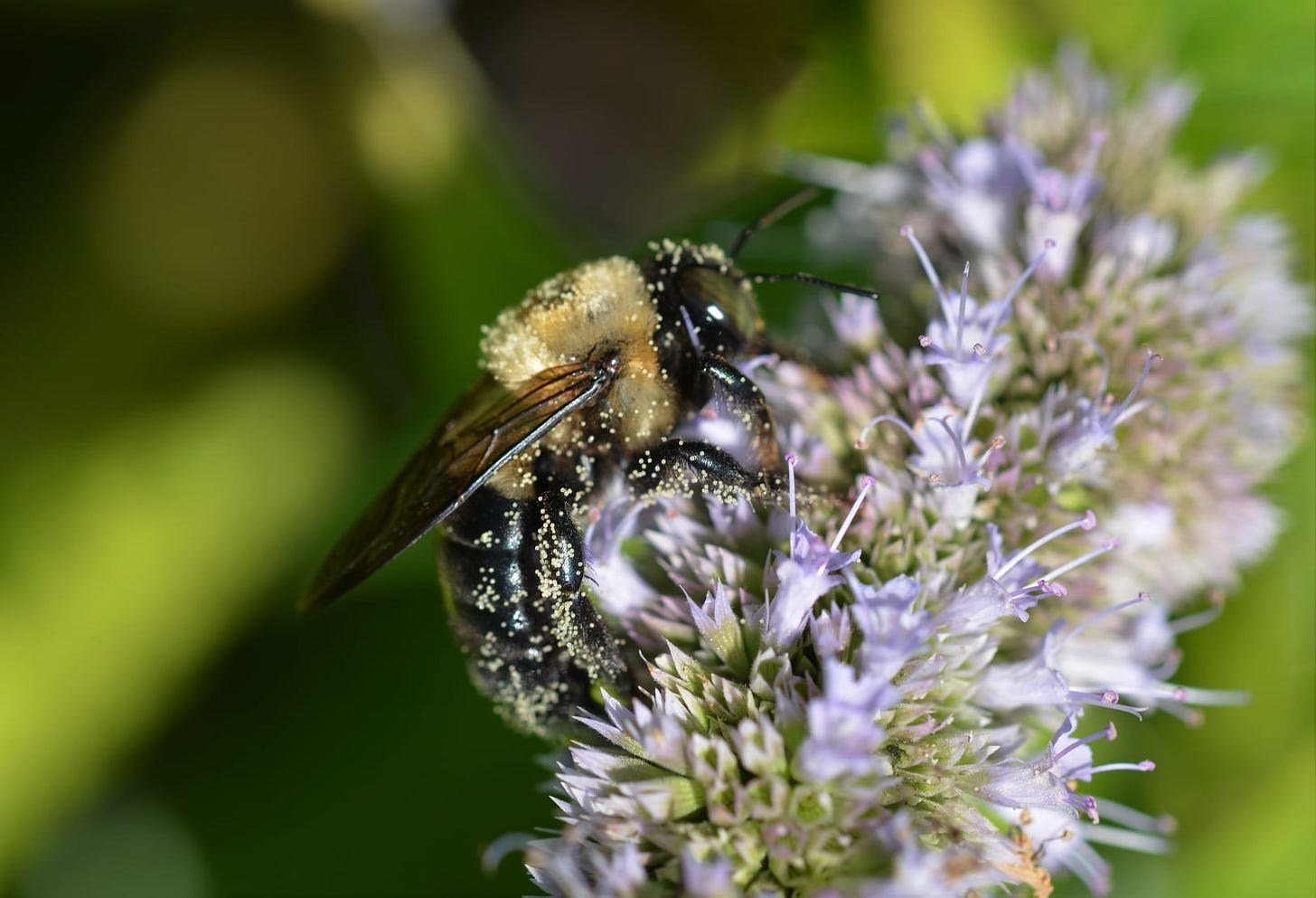
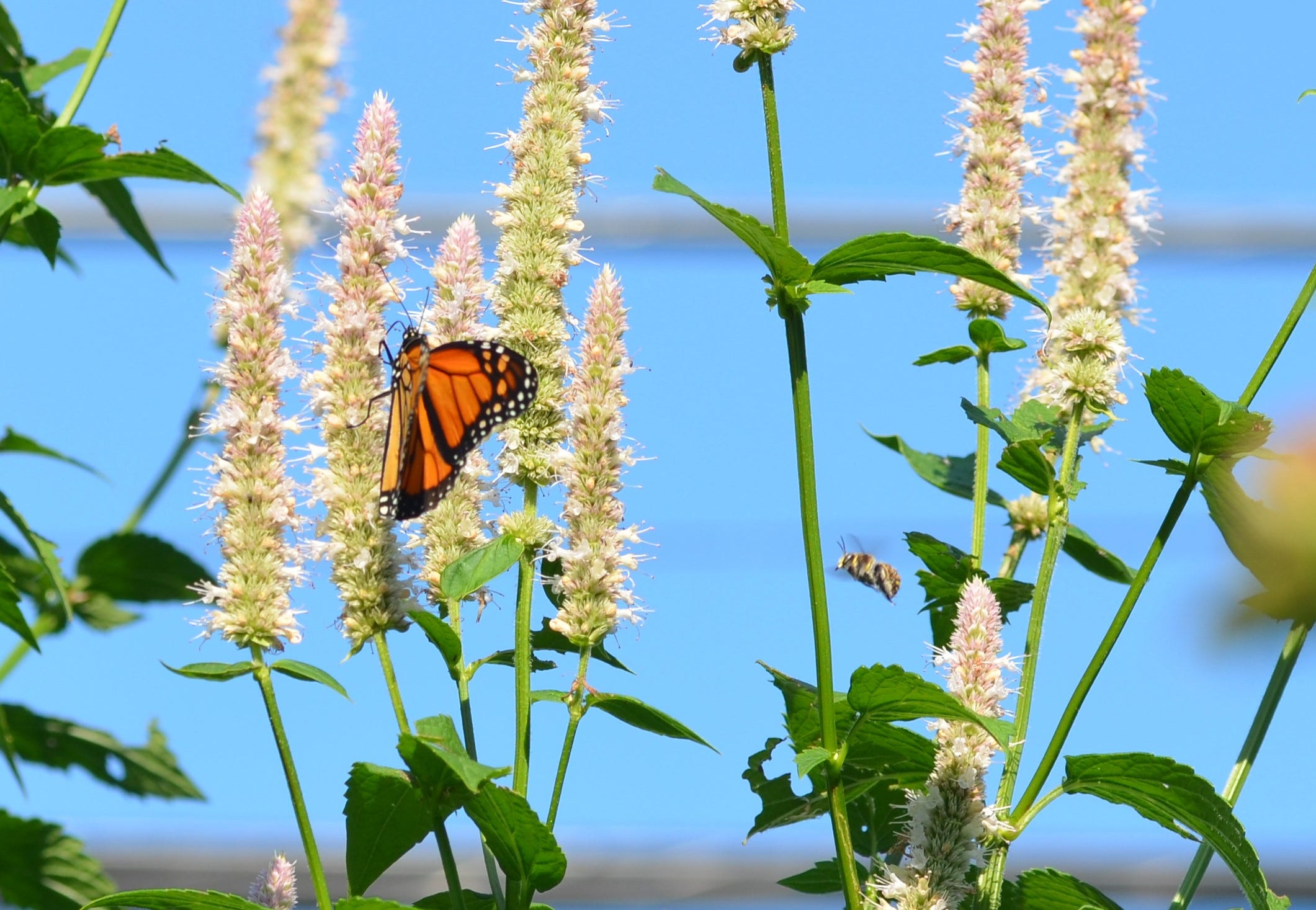
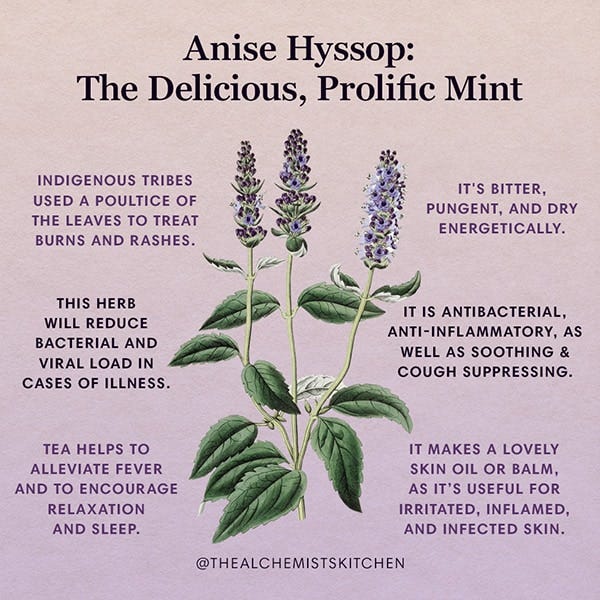

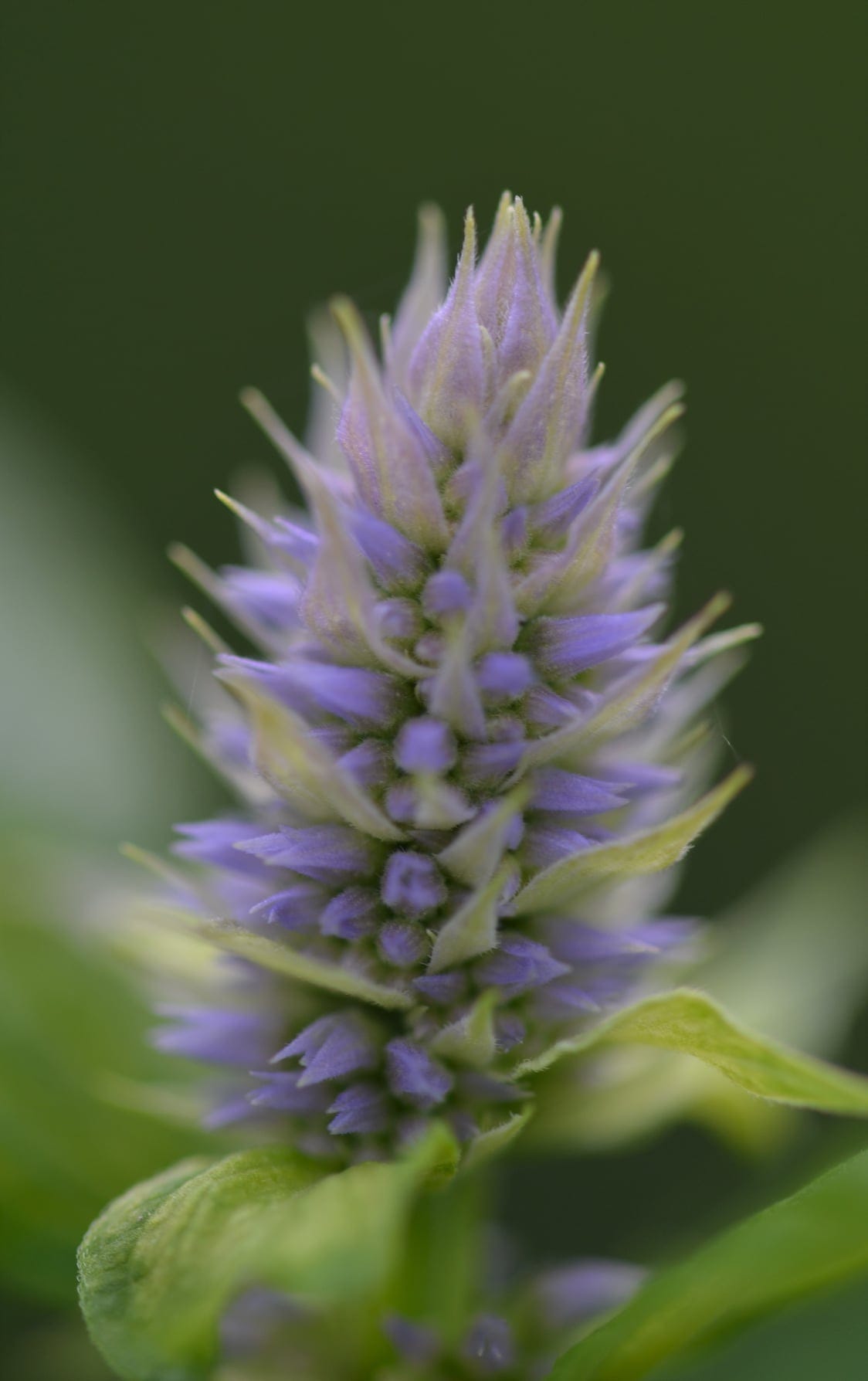
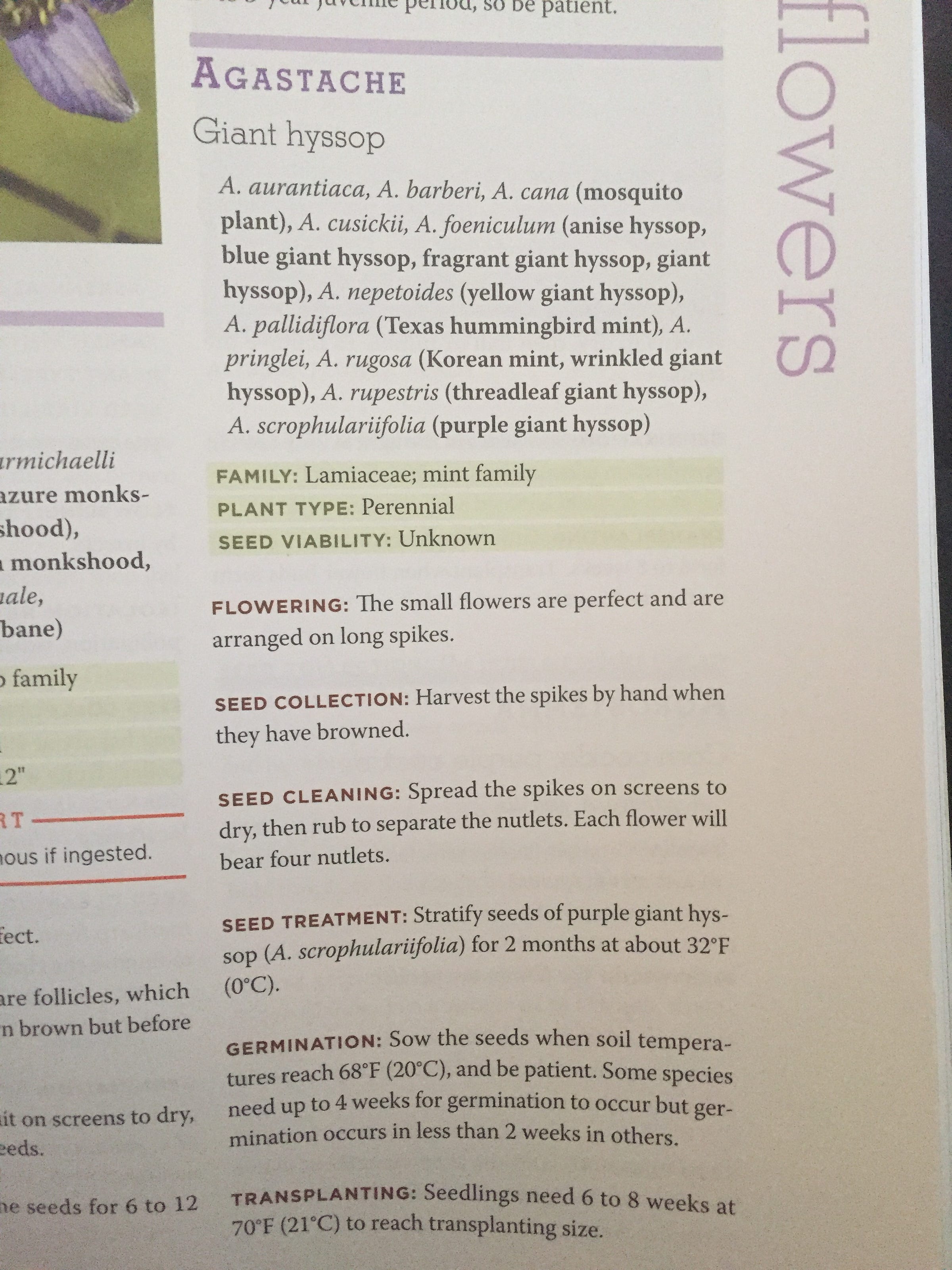
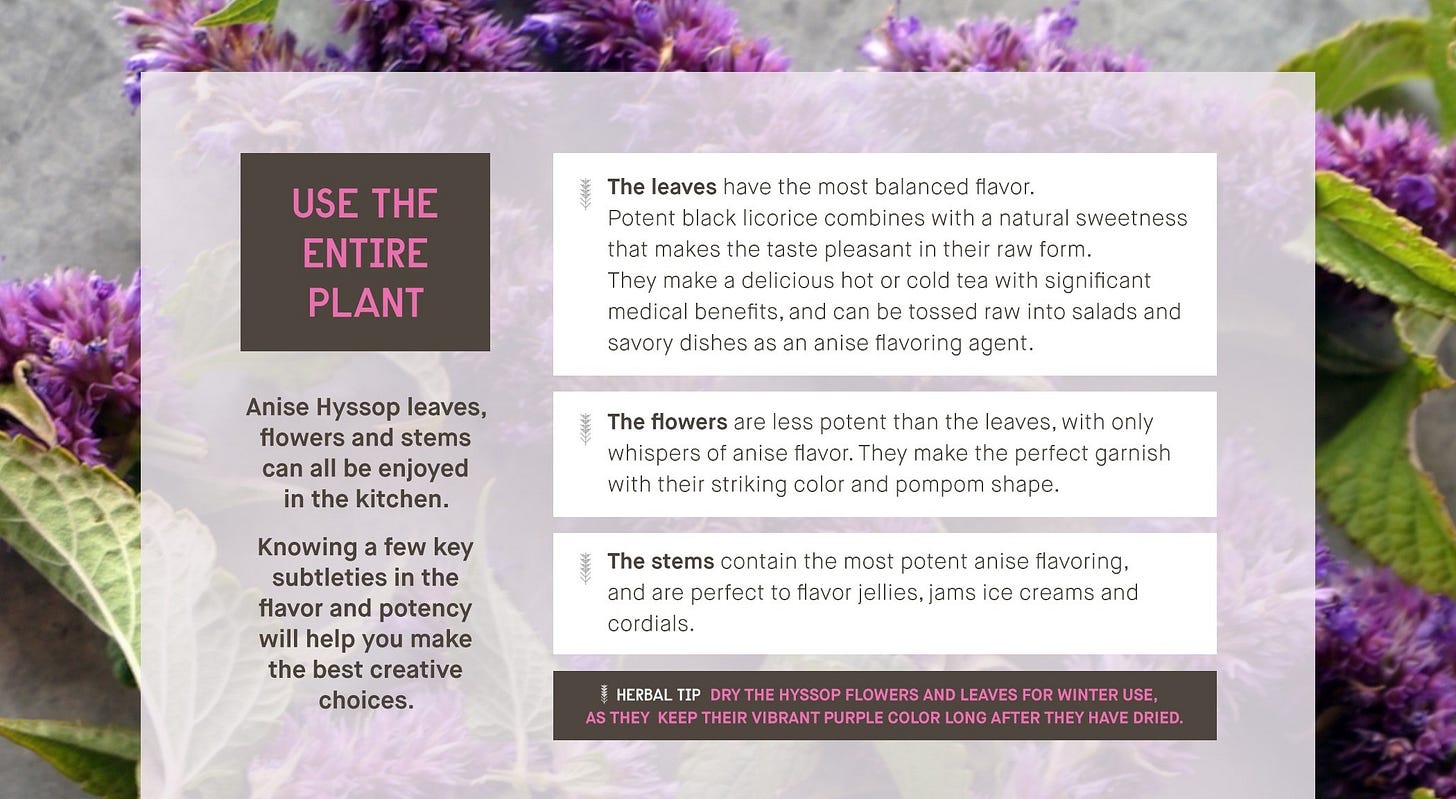


Impressive. I grew a lot of it in my food forest garden in Minneapolis. I have not seen any growing wild in Central Minnesota.
We had Hyssop in the garden of our previous home here in Colorado. I never knew of its medicinal and culinary applications. I just loved the smell of the leaves when you rubbed them between your fingers. I wish I'd known then what I know now.